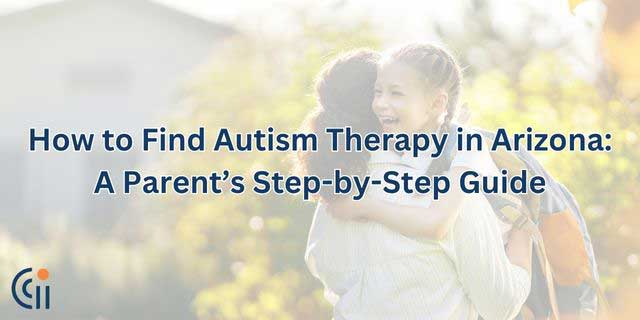Recognizing Early Signs of Autism
Early identification of autism spectrum disorder (ASD) is crucial for timely intervention and support. Understanding the early signs of autism in babies and toddlers can help parents and caregivers seek professional guidance as soon as possible, leading to better developmental outcomes. In this blog post, we will explore the key early signs of autism, the importance of early detection, and how Circle City ABA can assist families in identifying and addressing these signs.
The Importance of Early Detection
Recognizing the early signs of autism is vital because it allows for early intervention, which can significantly improve a child’s developmental trajectory. Early detection enables families to access specialized services and support that can enhance communication, social skills, and adaptive behaviors in children with autism. The sooner these interventions begin, the better the chances of positive outcomes.
Understanding Autism Spectrum Disorder
Autism spectrum disorder is a neurodevelopmental condition characterized by challenges in social communication, restricted interests, and repetitive behaviors. The severity and presentation of symptoms can vary widely, making it essential to identify early signs that may indicate the presence of autism. These signs can manifest as early as infancy, and being aware of them can prompt timely evaluations and interventions.
Key Early Signs of Autism in Babies
Babies with autism may exhibit certain behaviors and developmental differences that can signal the need for further evaluation. While every child is unique, some common early signs of autism in babies include:
Limited Eye Contact
One of the earliest signs of autism in babies is limited or lack of eye contact. Babies typically begin to make eye contact with their caregivers within the first few months of life. If a baby consistently avoids eye contact or seems to look past people rather than at them, it may be a sign of autism.
Delayed Smiling and Social Responsiveness
Babies usually start smiling socially by around 2 to 3 months of age. If a baby does not respond to social interactions with smiles or expressions of joy, it could indicate a developmental concern. Additionally, babies with autism may not respond to their names or show interest in engaging with others.
Lack of Gestures and Nonverbal Communication
By around 9 to 12 months, babies typically begin using gestures such as pointing, waving, and reaching to communicate their needs and interests. A baby with autism may show a lack of these nonverbal communication skills. They may not point to objects to show interest or reach out to be picked up.
Unusual Sensory Reactions
Babies with autism may exhibit unusual reactions to sensory stimuli. They might be overly sensitive to certain sounds, textures, or lights, or they might have a high tolerance for pain. These sensory differences can affect their interactions with their environment and caregivers.
Early Signs of Autism in Toddlers
As children grow into toddlers, additional signs of autism may become apparent. Identifying these signs early can lead to timely evaluations and interventions. Some common early signs of autism in toddlers include:
Delayed Speech and Language Development
One of the most noticeable signs of autism in toddlers is delayed speech and language development. While some children may experience speech delays without having autism, a lack of verbal communication or minimal use of words by 18 months to 2 years old could be a red flag. Toddlers with autism may also exhibit echolalia, repeating words or phrases without understanding their meaning.
Repetitive Behaviors and Routines
Toddlers with autism often engage in repetitive behaviors, such as hand-flapping, rocking, or spinning objects. They may also insist on following specific routines and become distressed if these routines are disrupted. These behaviors can be a way for them to self-soothe or manage sensory input.
Limited Interest in Social Interaction
Toddlers with autism may show limited interest in playing with other children or engaging in social activities. They might prefer to play alone and have difficulty understanding social cues, such as taking turns or sharing. This lack of social interest can affect their ability to form friendships and interact with peers.
Difficulty with Joint Attention
Joint attention is the ability to share a focus on an object or activity with another person. Toddlers with autism may have difficulty with joint attention, such as following a parent’s pointing gesture or showing an object to someone else. This skill is important for language development and social communication.
Unusual Play Patterns
Toddlers with autism may exhibit unusual play patterns, such as lining up toys instead of playing with them functionally. They might become fixated on specific parts of toys, such as spinning the wheels of a car, rather than engaging in imaginative or pretend play. These atypical play behaviors can be an early indicator of autism.
How Circle City ABA Can Help
At Circle City ABA, we understand the importance of early detection and intervention for children with autism. Our team of experienced professionals is dedicated to providing comprehensive assessments and individualized therapy programs to support your child’s development. Here’s how we can assist you:
Comprehensive Autism Assessments
We offer thorough assessments to identify early signs of autism and determine the appropriate interventions. Our evaluations include observations, developmental screenings, and standardized assessments to provide a comprehensive understanding of your child’s needs.
Evidence-Based ABA Therapy
Circle City ABA specializes in applied behavior analysis (ABA) therapy, which is widely recognized as an effective treatment for autism. We tailor our ABA therapy programs to address the unique strengths and challenges of each child. We focus on improving communication, social skills, adaptive behaviors, and reducing problem behaviors.
Family-Centered Approach
We believe that families play a crucial role in a child’s development. Our team works closely with parents and caregivers to provide training, support, and resources. We involve families in the therapy process to reinforce the skills learned in therapy at home and in everyday situations.
Ongoing Monitoring and Support
We continuously monitor your child’s progress and make necessary adjustments to their therapy plan as part of the ongoing process of early intervention. Our goal is to help your child reach their full potential and achieve meaningful developmental milestones.
Conclusion: Taking Action Early
Recognizing the early signs of autism in babies and toddlers is the first step towards providing the support and interventions they need to thrive. At Circle City ABA, we dedicate ourselves to helping families identify and address these signs through comprehensive assessments and evidence-based ABA therapy.
If you have concerns about your child’s development or suspect they may have autism, don’t wait to seek help. Contact Circle City ABA today to learn more about our services and how we can support your child’s journey toward a brighter future.


